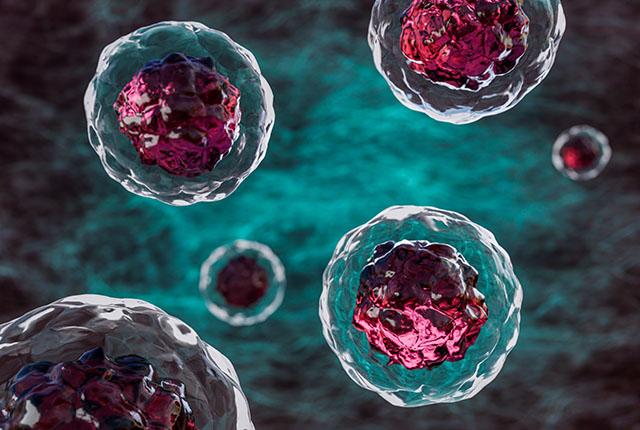
Protein gel enhances cell injection and engraftment
Advance improves survival of transplanted cells being studied as treatments for Parkinson’s, arthritis and other conditions.Media Contact: Chris Talbott - 206-543-7129, talbottc@uw.edu

A gel created with genetically engineered proteins protects transplanted cells during injection and helps them engraft in their target tissue, researchers from the University of Washington School of Medicine in Seattle report.
The advance promises to improve survival of transplanted cells being developed as potential treatments for Parkinson’s disease, arthritis, heart disease and other common disorders.
The goal of cell therapies is to restore function of diseased or damaged tissue by introducing healthy, new cells. The most direct way to do this is to inject the cells directly into the diseased tissue. With this approach, however, the fragile cells are often damaged by the forces generated during the injection and often fail to engraft into the target tissue.
To get around this problem scientists have tried using gels derived from biological substances, such as collagen, or synthetic materials. But these fixes have drawbacks. The synthetic materials, for example, often trigger an immune response that may damage the implanted cells and the properties of the biological materials can vary from batch to batch, making them difficult to work with.
The researchers report they have now developed a protein gel that overcomes these limitations, protecting cells during injection and promoting their engraftment after transplantation.
The researchers report the advance in a paper published March 13 in Advanced Sciences. Cole DeForest, a UW associate professor of chemical engineering and bioengineering and faculty member of the UW Institute of Stem Cell & Regenerative Medicine, led the project. First authors on the paper were Jennifer Bennett and Mary O'Kelly Boit, who were both graduate students in the DeForest lab when they did the work.
The material developed by the UW team is a protein-based hydrogel that thins during injection, bearing the cells safely to the target tissue, where it re-solidifies, providing a scaffold that helps the cells remain at the site and engraft.
Because of their structure, these proteins do not trigger the immune reactions that synthetic materials often do. And since they are genetically engineered their properties can be fine-tuned to consistently create gels with specific properties.
“The bulk of the protein is based off an intrinsically disordered protein called XTEN that has been evolved to have essentially no immune response,” DeForest said. “And because the material is formed from a single protein component, it can be produced at scale with essentially no batch-to-batch variability.”
In both culture dishes and mice, the gels protected and sustained the viability of human fibroblasts, hepatocytes, embryonic kidney cells and embryonic stem-cell-derived cardiomyocytes, the researchers report.
Co-author Charles Murry, professor of laboratory medicine and pathology and director of ISCRM, said the protein hydrogel is a huge improvement over existing approaches.
“Transplantation is a huge stress to cells, subjecting them to brutal mechanical forces and delivering them to an inhospitable, diseased environment,” Murry said. “Right now, more than 90% of the cells we deliver die from these stresses. This tunable protein hydrogel protects our cells during delivery and gives them a temporary niche, allowing better survival and integration with the host tissue.”
This work was supported in part by the National Institutes of Health (R01HL146868, R01HL148081, R01DK128551, 1F31HL152626-01, T32EB001650) and the National Science Foundation (R35GM138036, DGE-2140004).
Adapted by Michael McCarthy from material provided by Thatcher Heldring, ISCRM marketing and communications manager
For details about UW Medicine, please visit https://uwmedicine.org/about.
Tags:cellsbioengineering